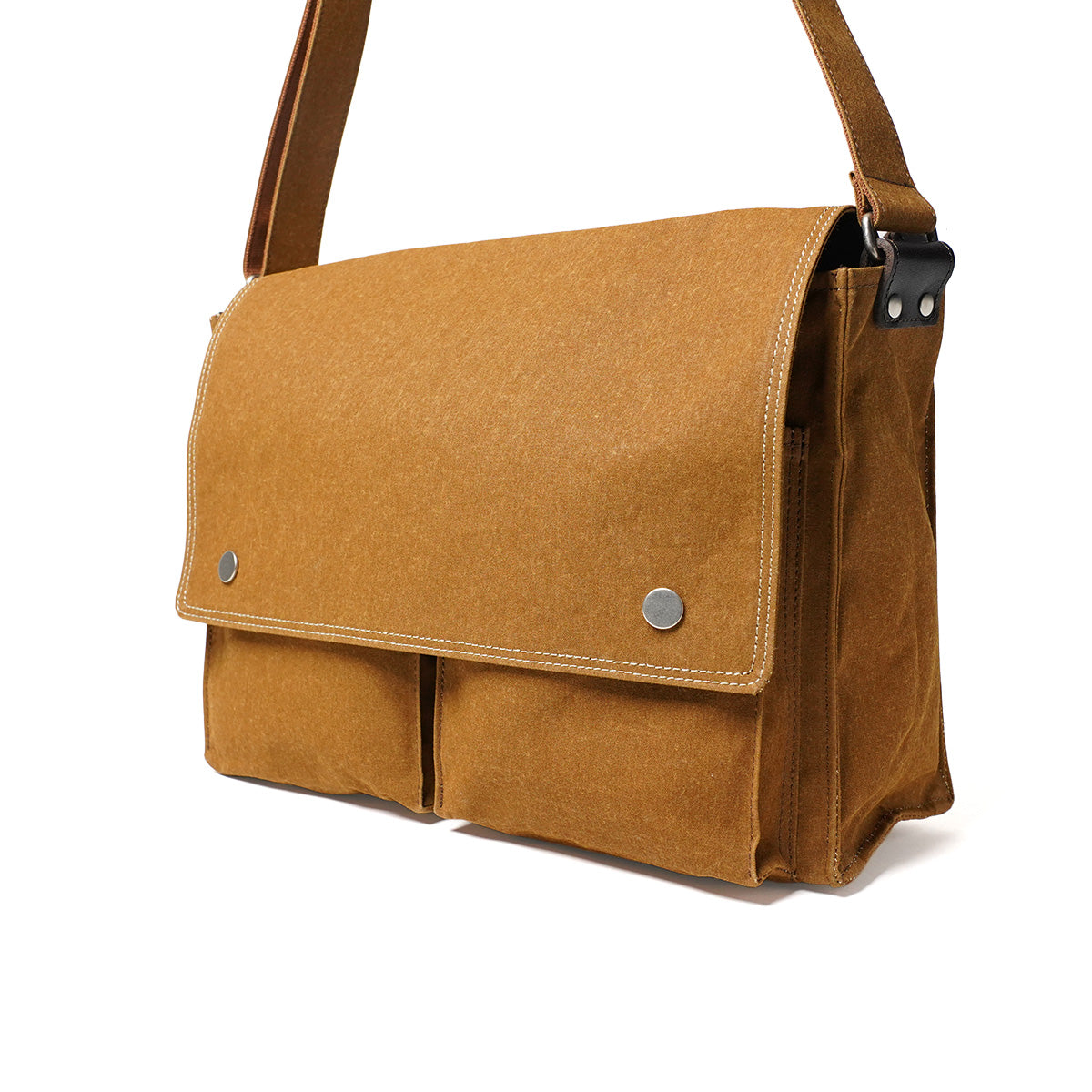
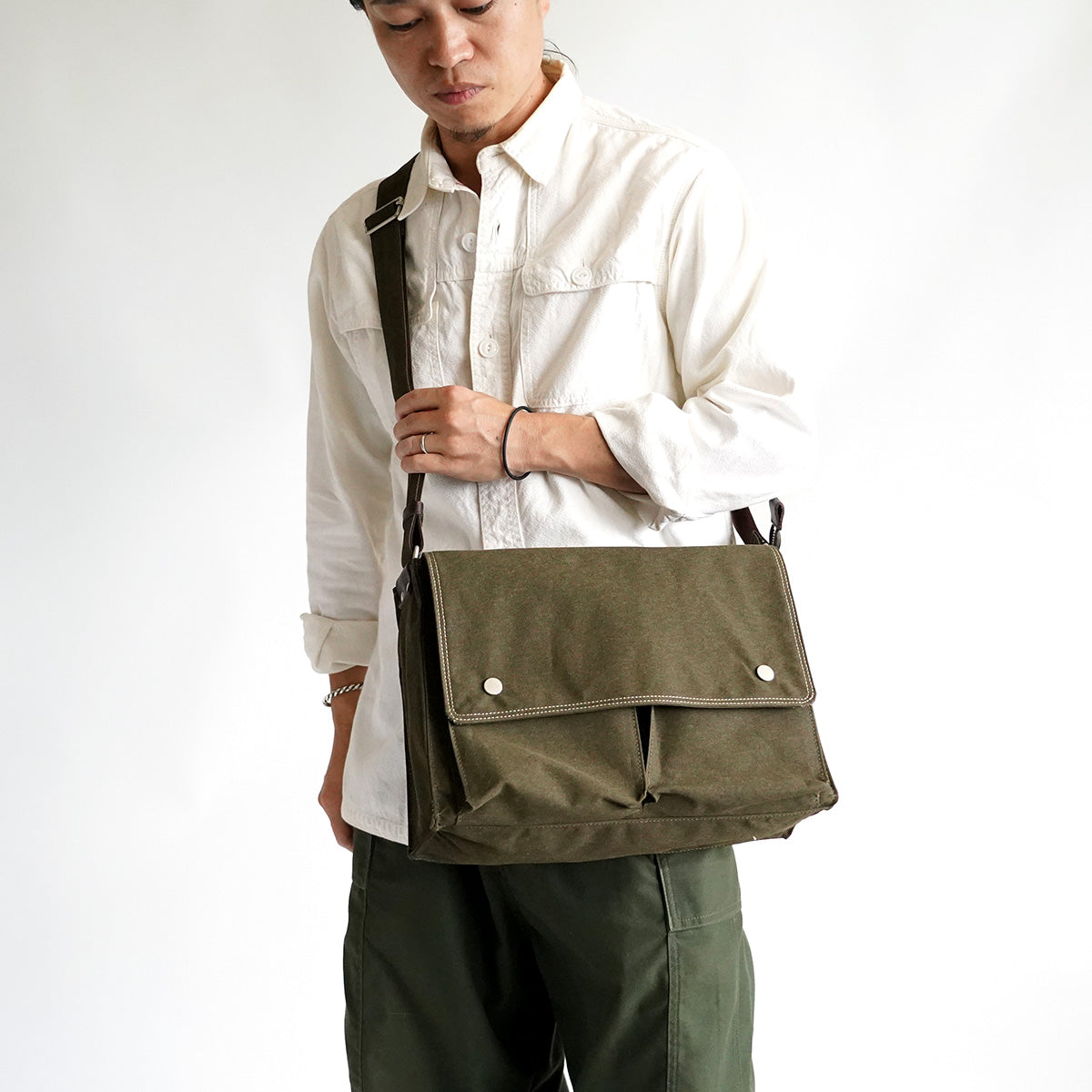

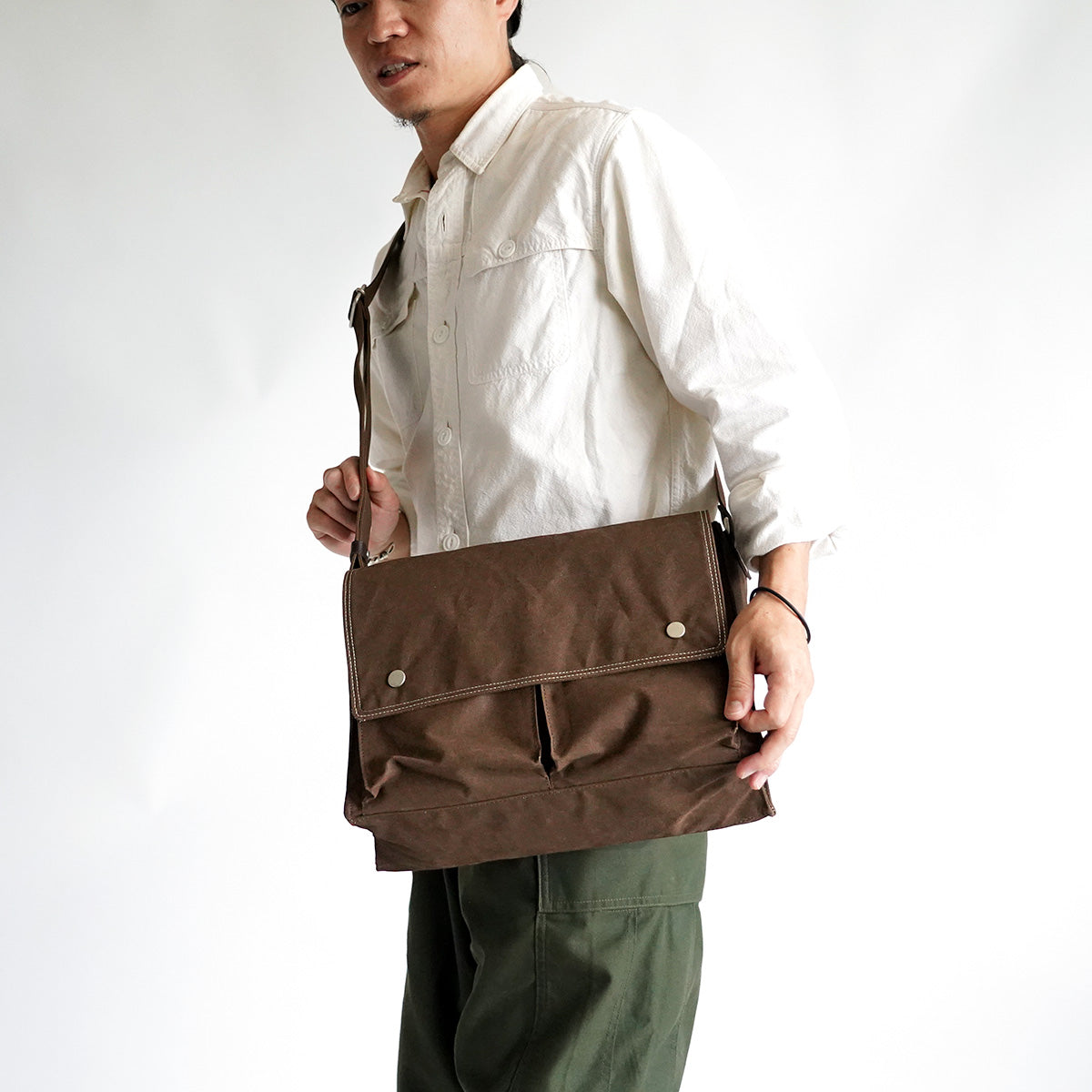
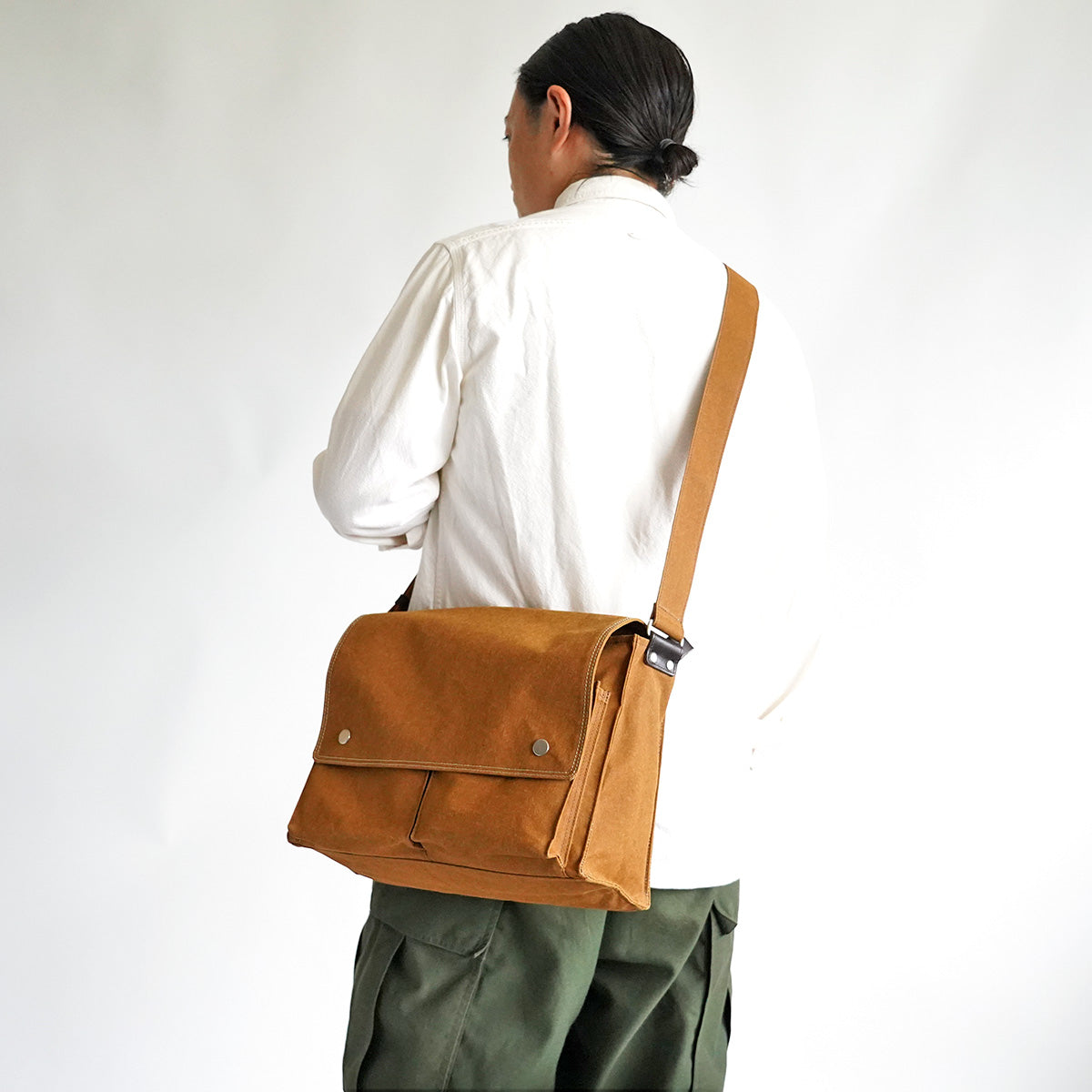
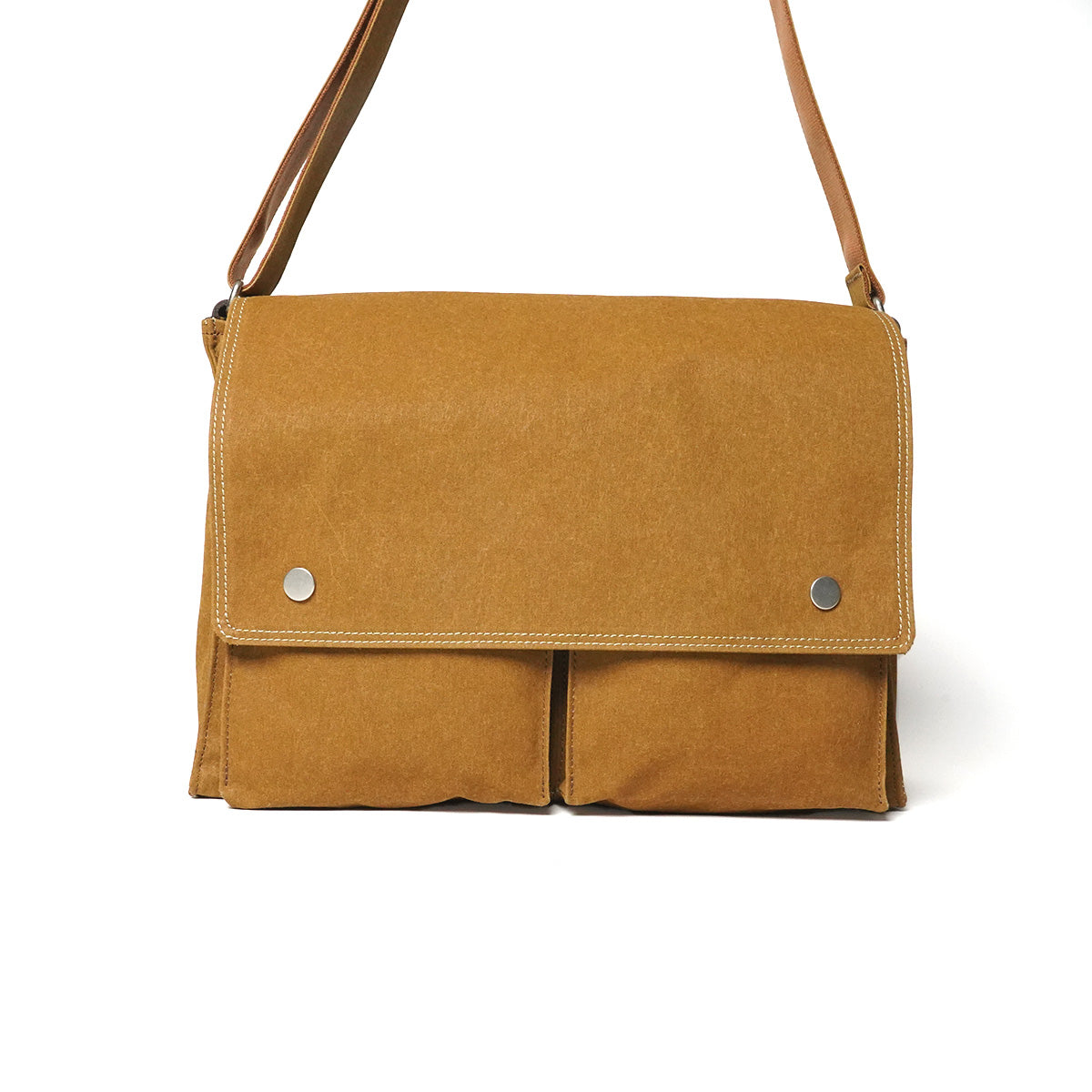
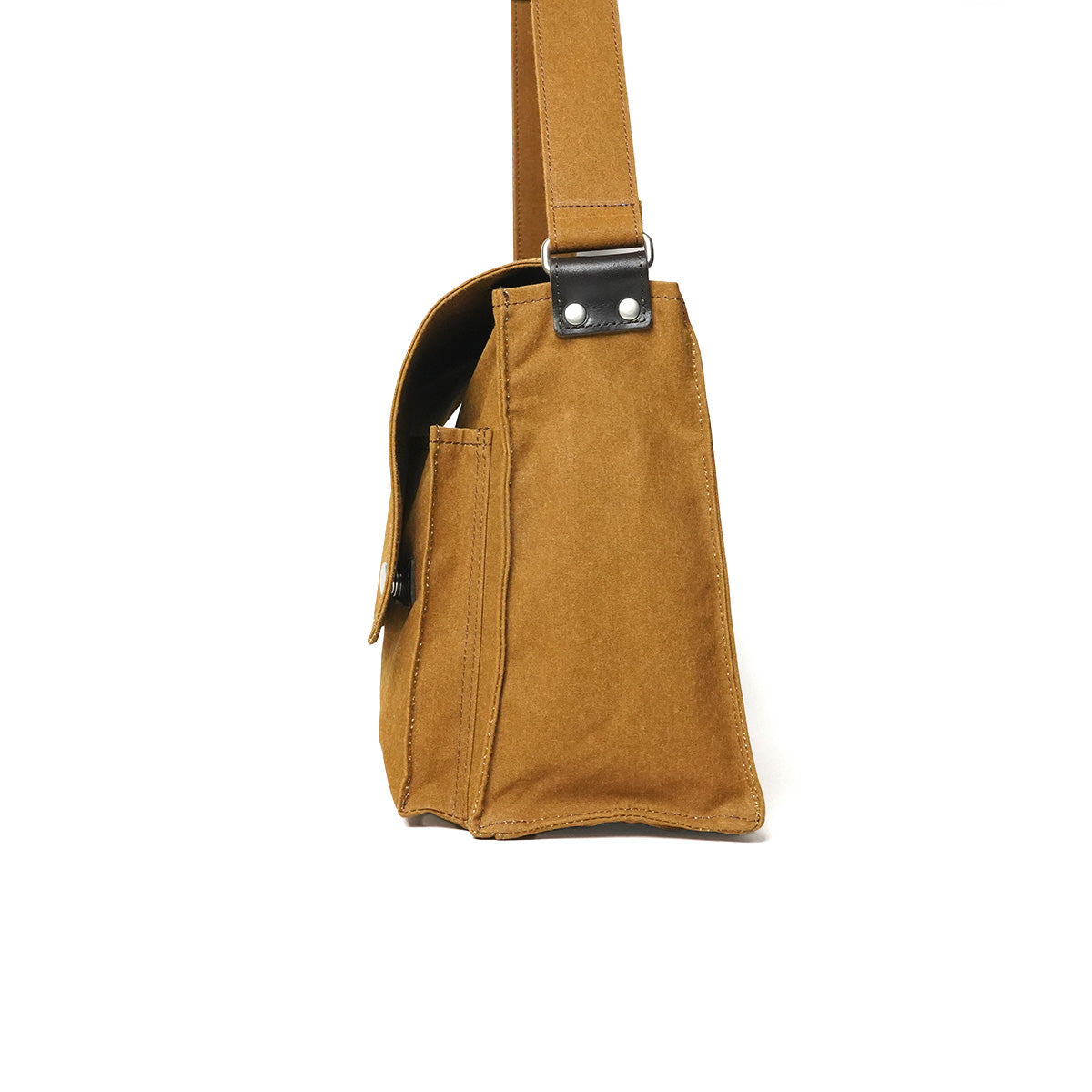
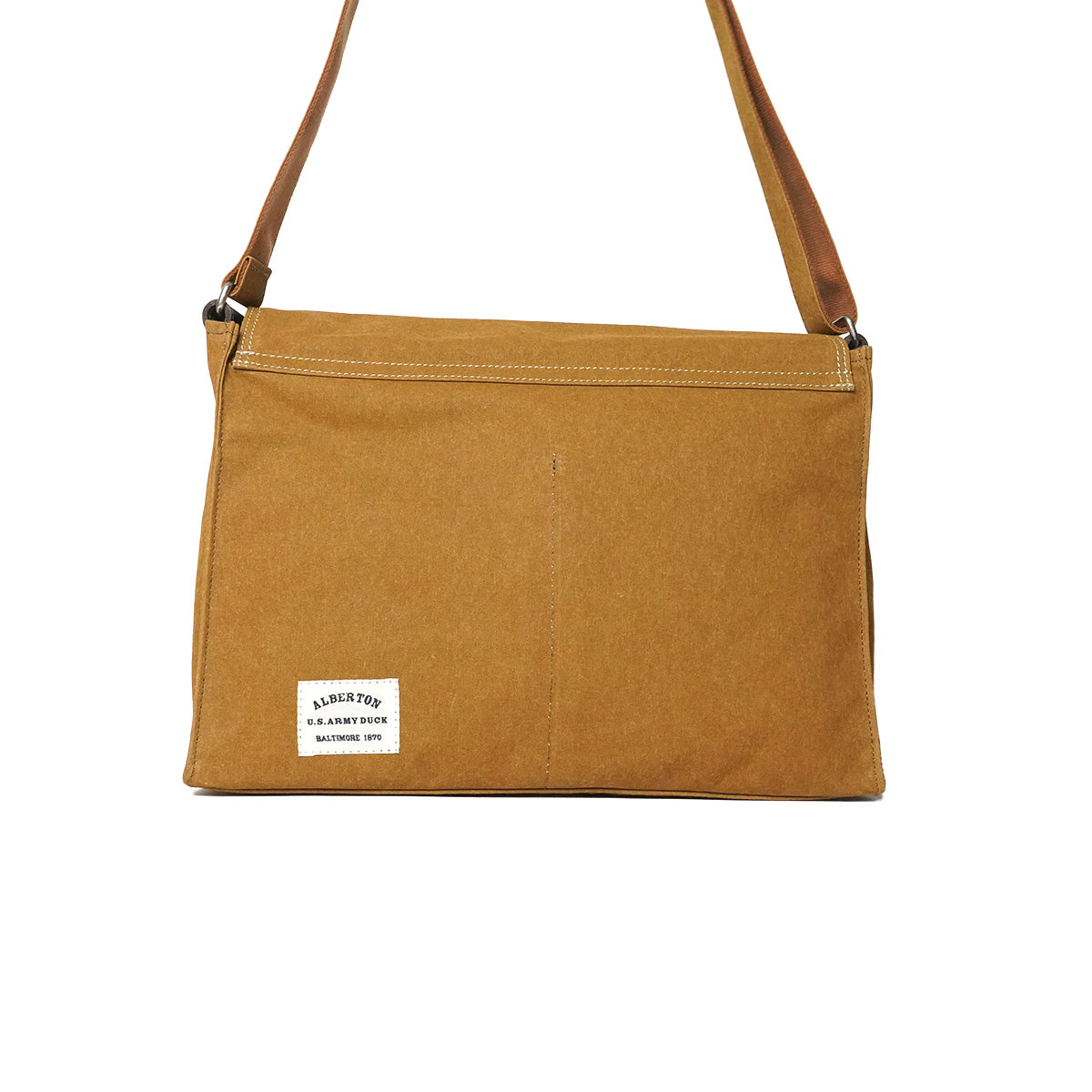
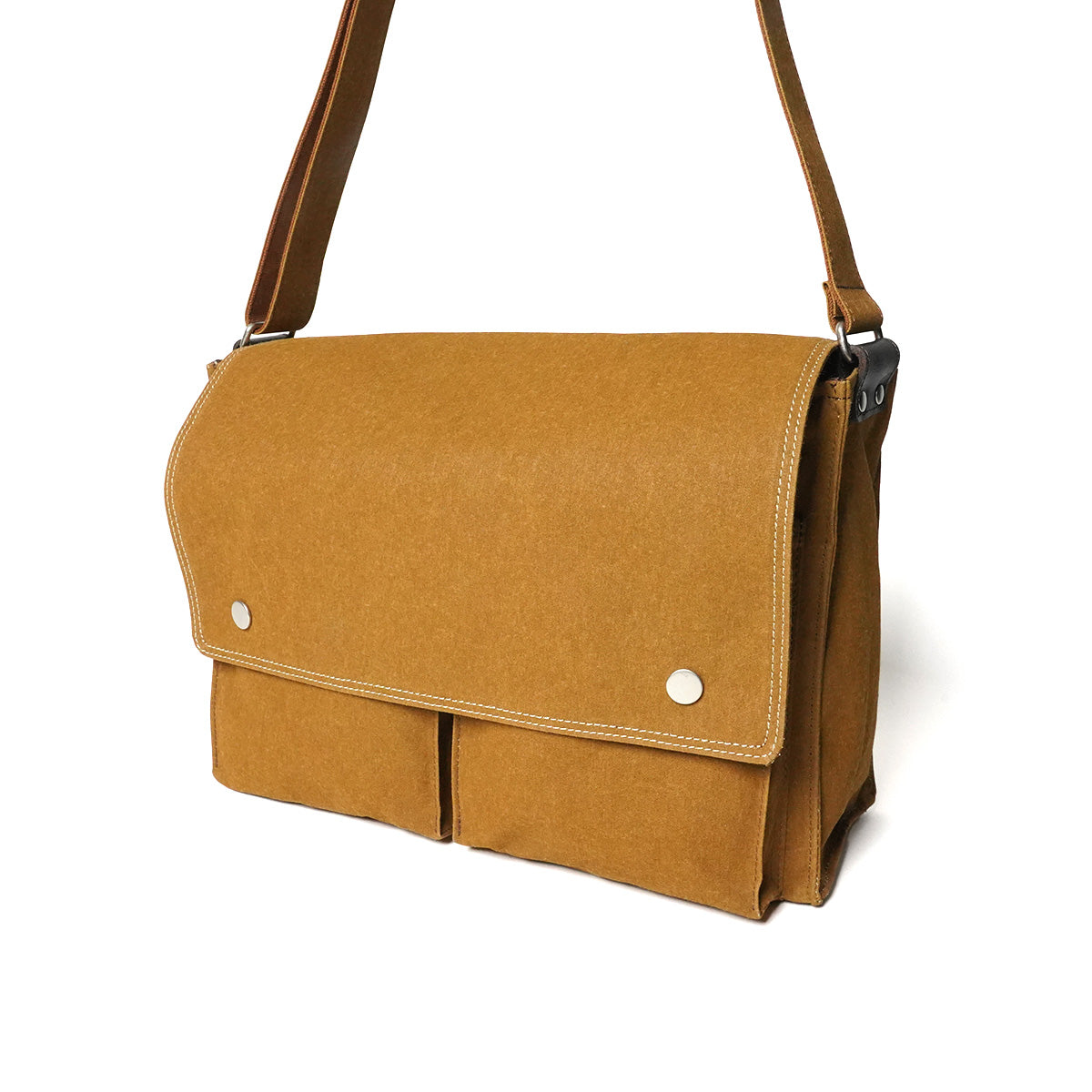
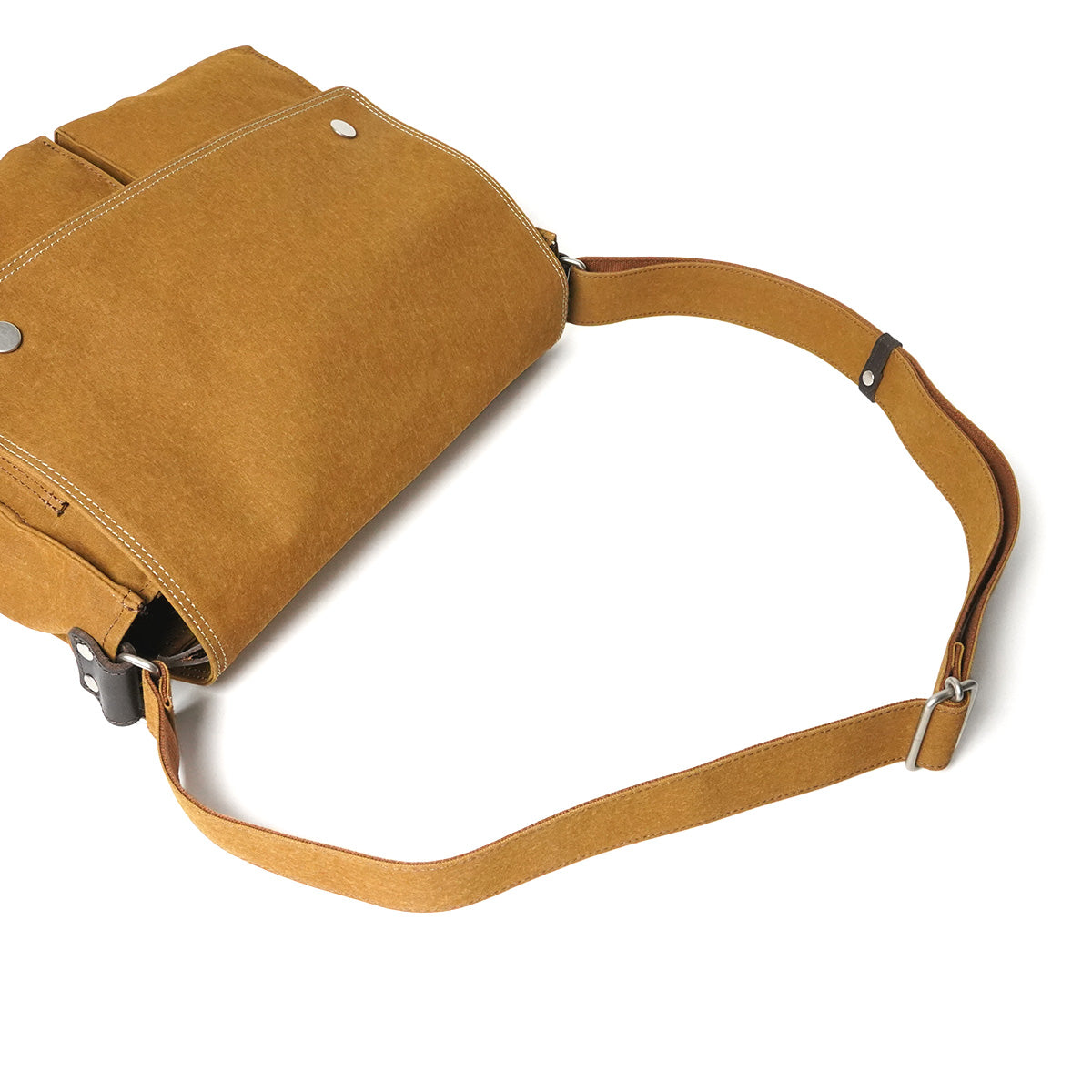
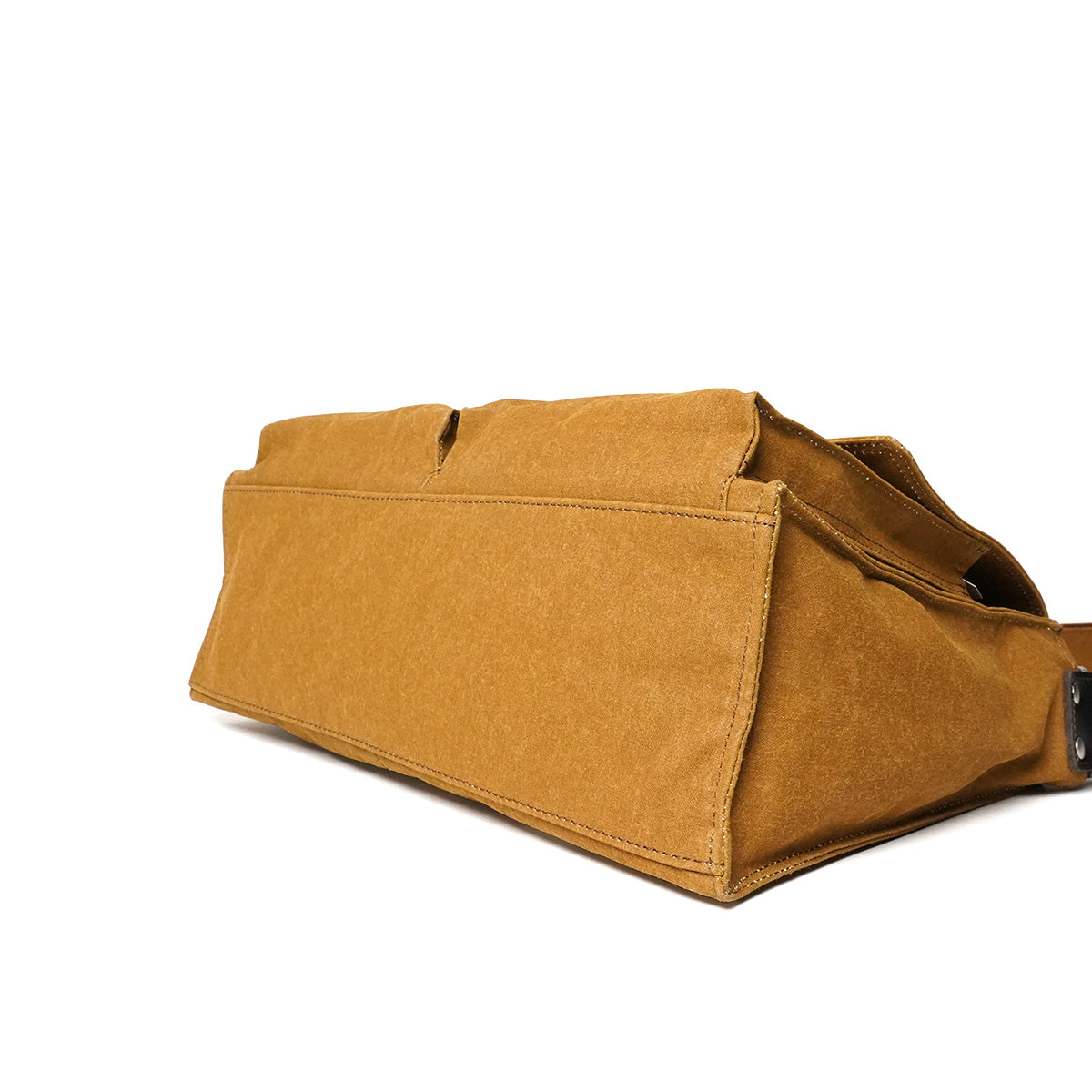
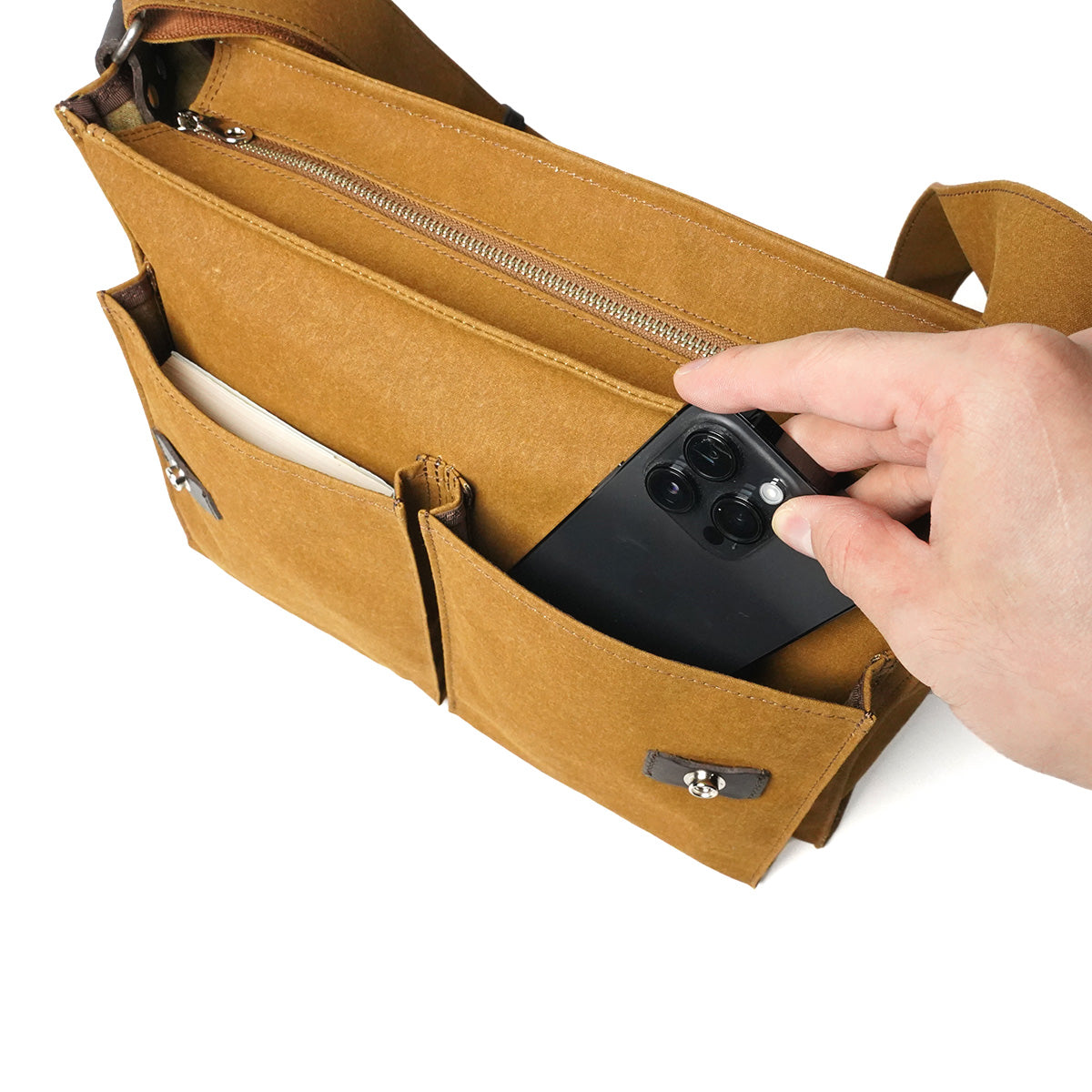


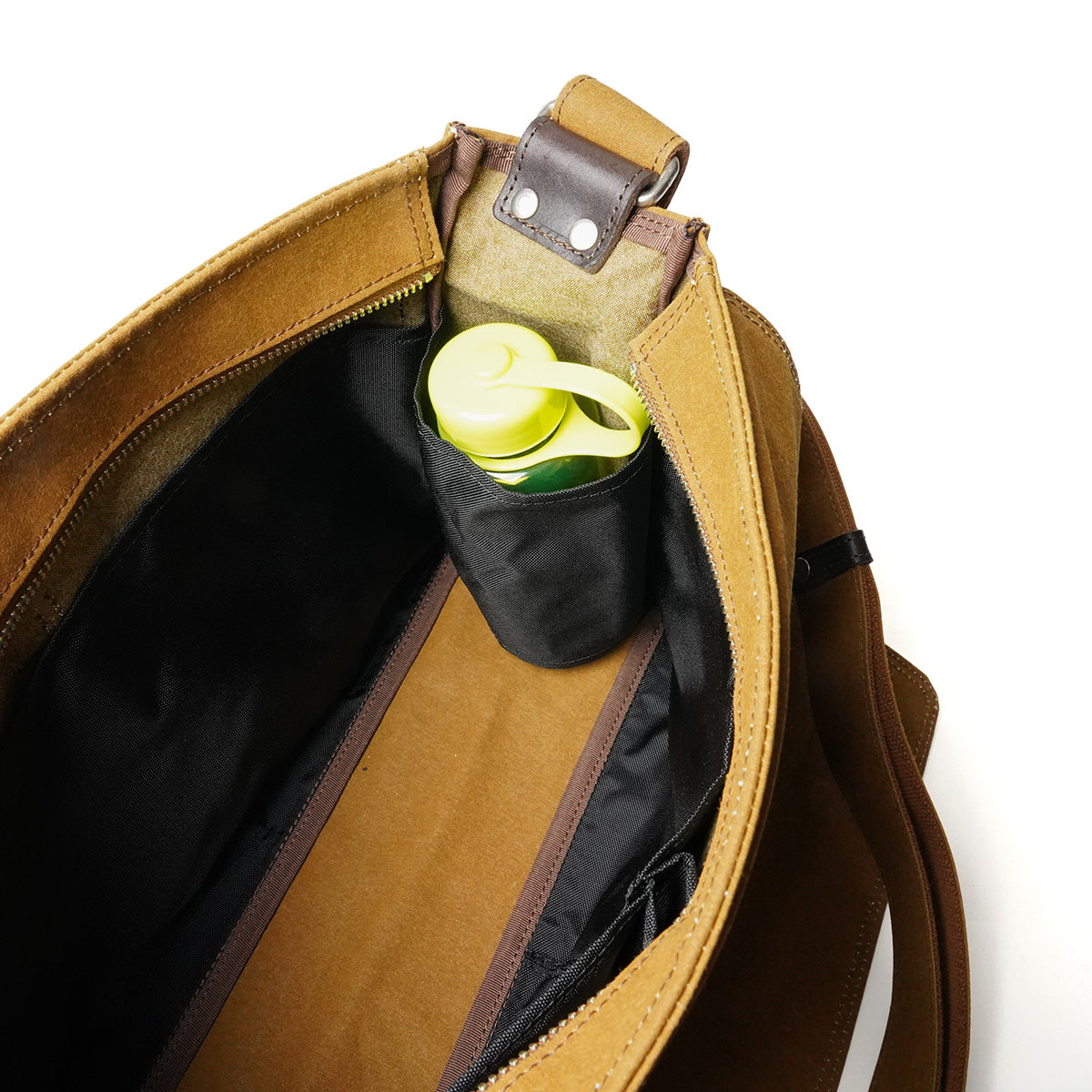

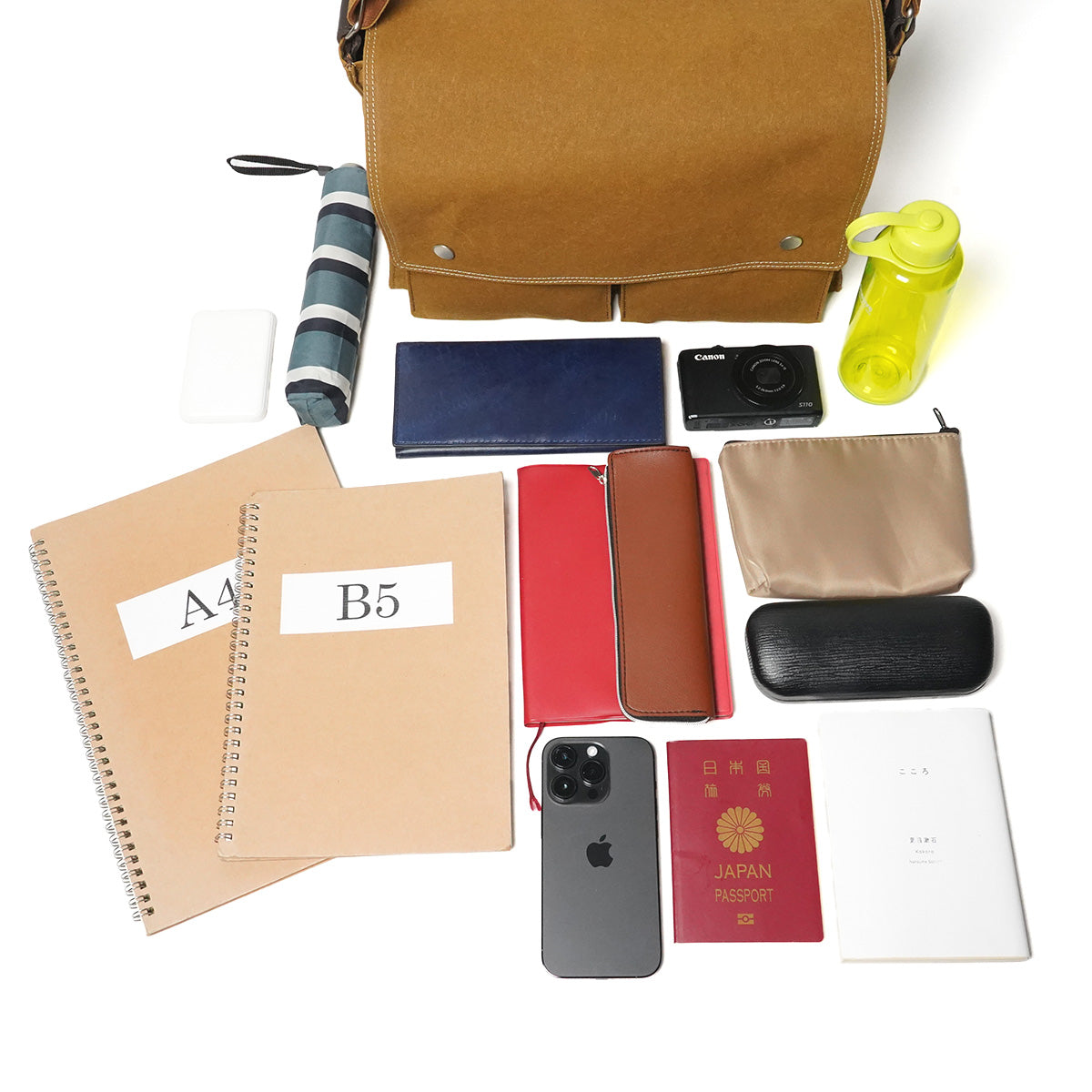
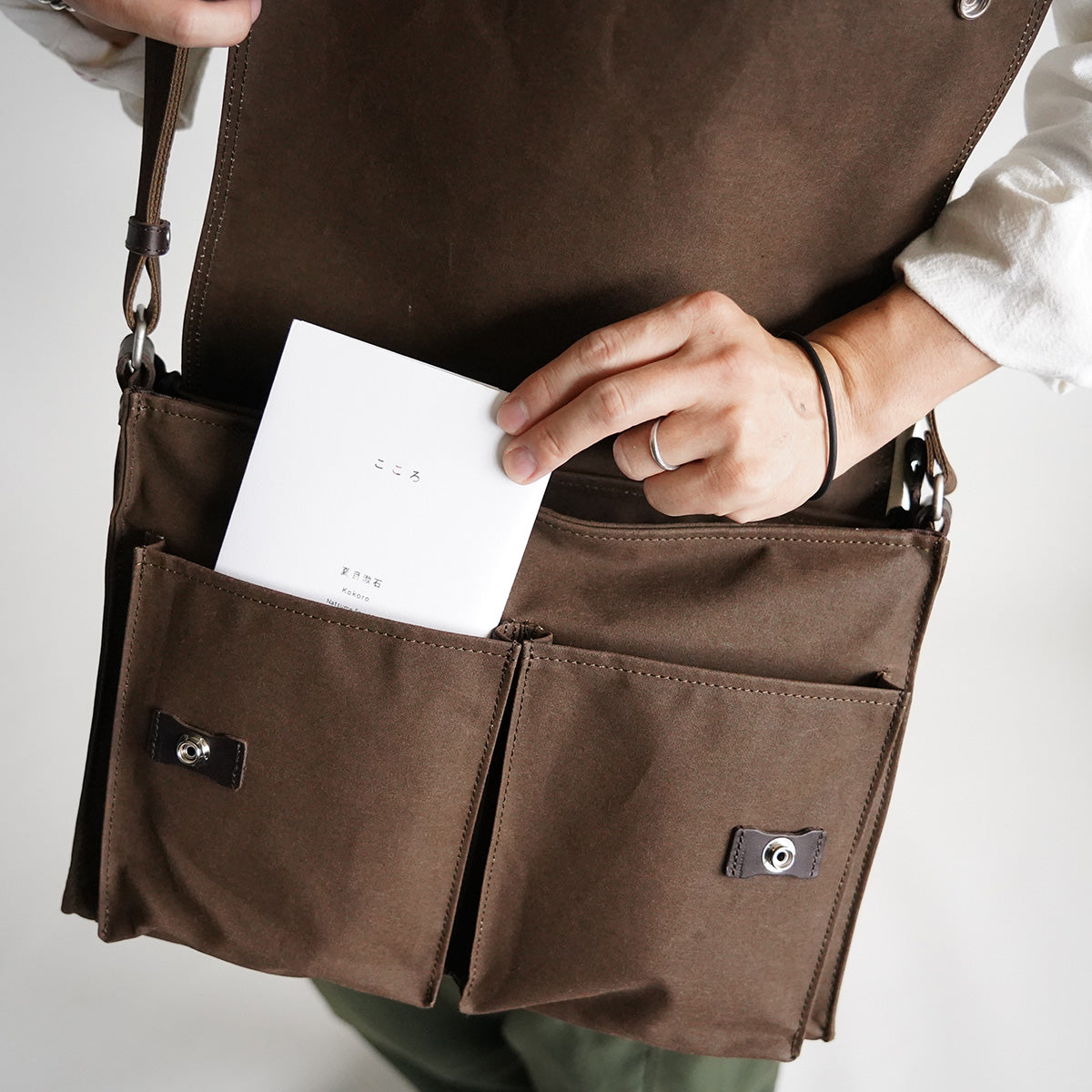
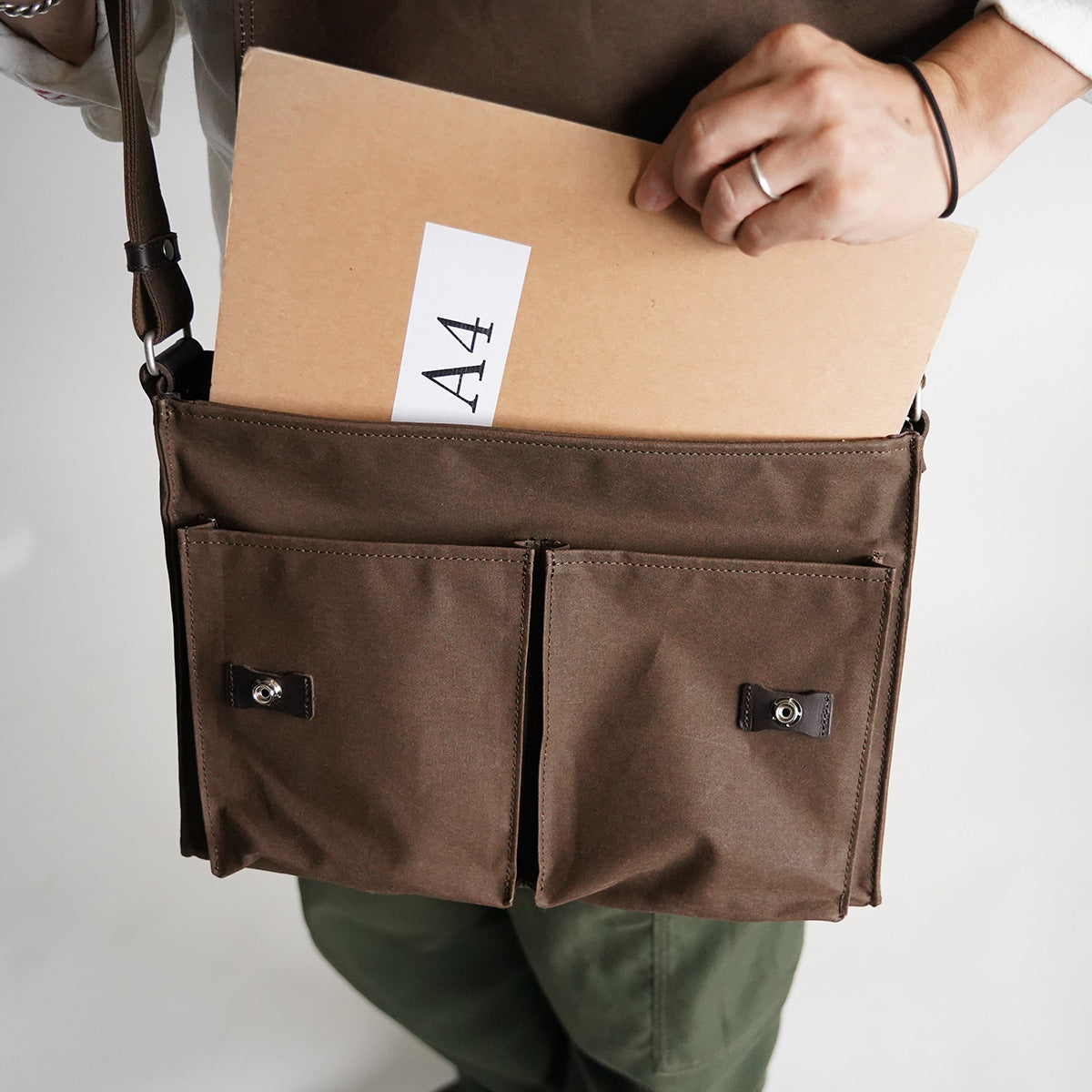
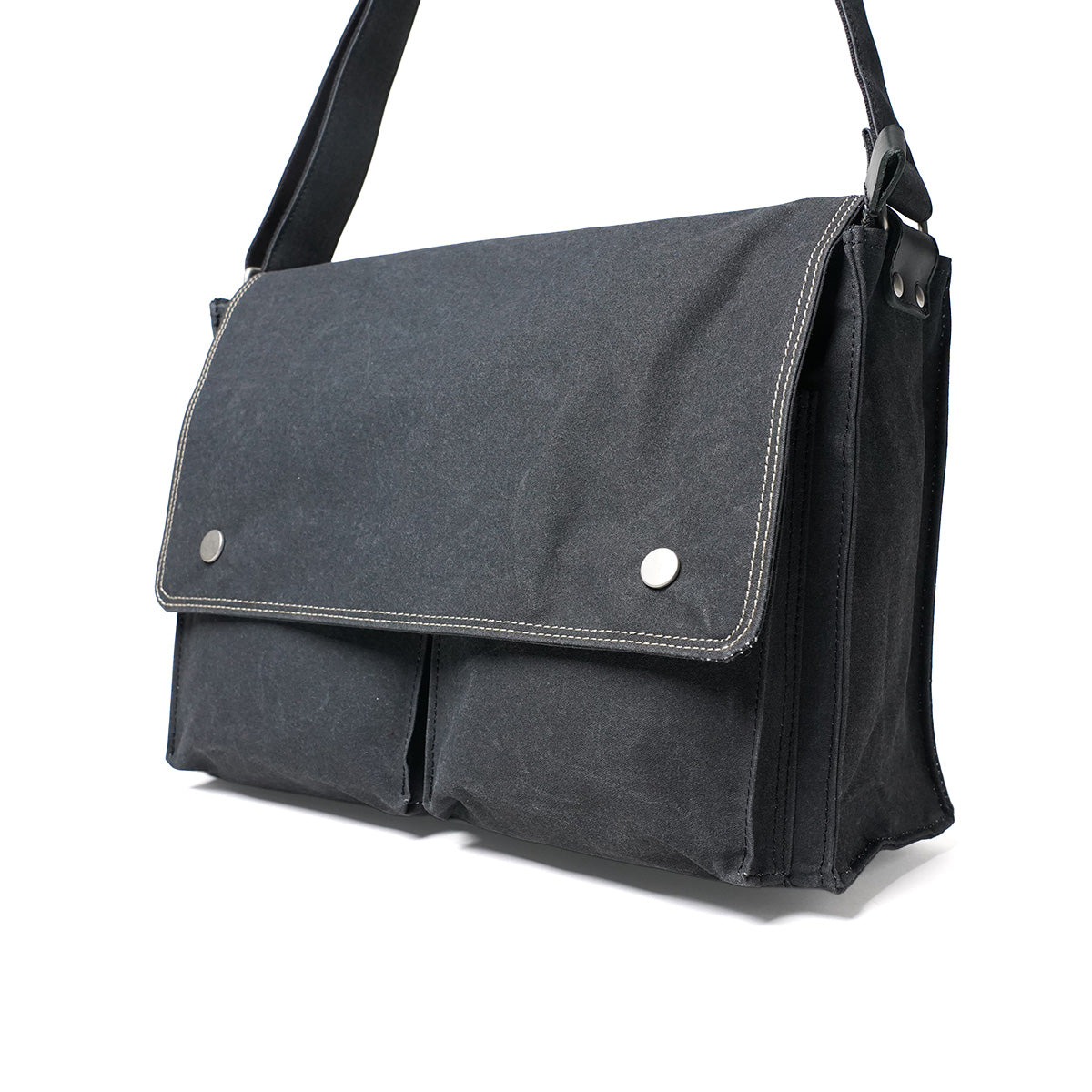
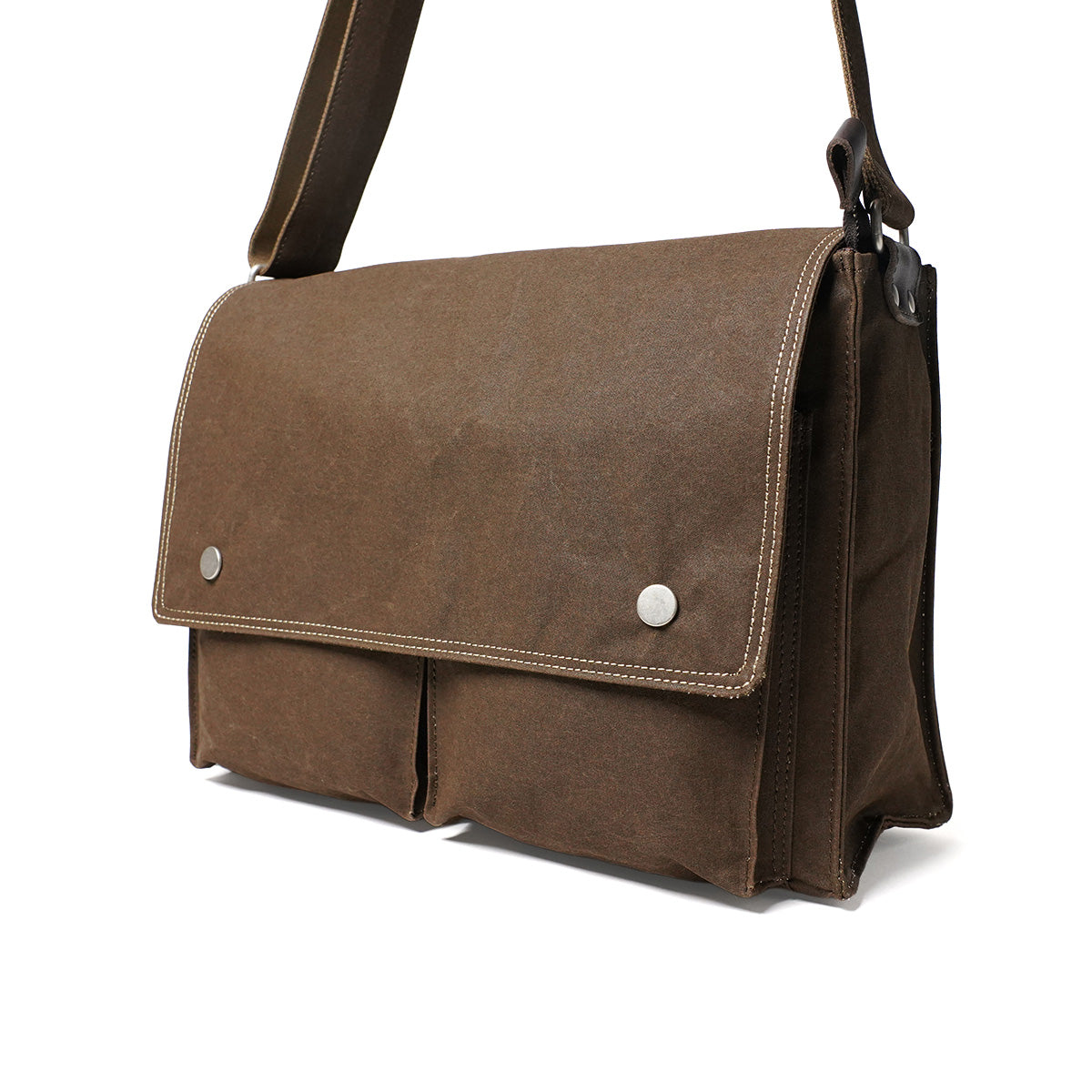
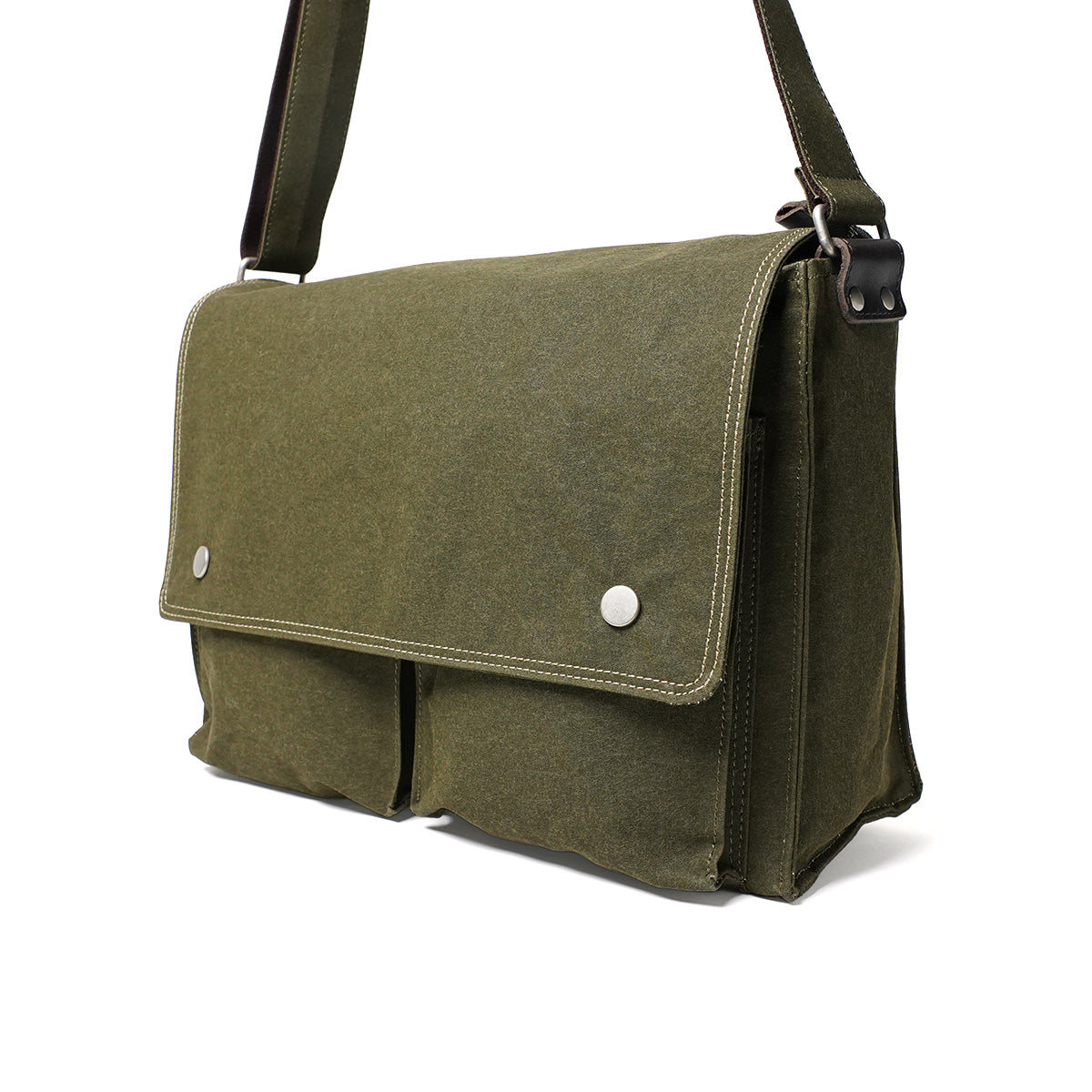
《-Military Tent- Shelter Duck》
It is a reproduction of the material used in US military pup tents until the first half of 2003, and is called the "10oz Shelter Duck."
Duck fabric is densely woven with fine threads, making it thin, lightweight, and durable. The weft thread is made of a special flame-retardant fiber called modacrylic fiber (Kanecaron Protex), making it a functional material that is specialized for flame retardancy.
Also, since it is designed for use in tents, the material is highly water-resistant, so you can rest assured even if it gets a little wet in the rain. The water resistance is an excellent 1000mm, while a regular umbrella is said to be 250-500mm.
The surface is coated with a pigment, and as it is rubbed it turns white, giving it a deeper appearance.
The fabric itself looks rugged and heavy, but when you touch it, it's extremely light, yet durable and water-resistant.
" A town bag made from outdoor materials "
This shoulder bag is large enough to fit A4 size documents and is perfect for work.
This is a recommended item that updates a design that has been loved by Baggy Port for many years by changing the materials.
The two easy-to-use front pockets have wide openings, making them ideal for storing items that you want to access quickly.
The main compartment also has three inner pockets, making it very easy to sort your belongings, and there is also a storage area for plastic bottles.
This shoulder bag is perfect for those who want to store their belongings securely or who just want a simple bag.
| Item number | INS603 |
| specification |
■Size (approximate) 24cm long x 33cm wide x 12cm deep Weight 460g ■ Main entrance 32cm ■Pockets (4 in total) External pockets: 2 x 13cm wide x 17cm deep (front open pockets) ○Inner pocket: Width 16cm x Depth 16cm x 2 (with bamboo gusset) Width 31.5cm x Depth 16.5cm (open pocket) ■ Shoulder strap width: 4cm Length: 73cm - 137cm Height: 30cm - 64cm Slide type (stepless adjustment) |
| material | Flame-retardant military canvas |
| Country of origin | Made in Japan |
We strive to represent the colors and textures of our products as close to the actual products as possible, but the colors may appear different from the actual product depending on the lighting conditions during photography and the settings of your monitor .
Please note that there may be slight differences in the dyeing finish depending on the production lot, and the color may differ from the image shown.
- If it gets wet, immediately wipe off the moisture with a dry cloth and dry it in the shade.
- Avoid high temperatures and humidity and store in a well-ventilated place.
- If you are concerned about stains, avoid washing the entire item as it is machine washable. Instead, gently pat the area with a soft cloth or sponge using lukewarm water and a mild detergent. Be careful with the leather parts.
Nationwide flat rate of 500 yen (tax included)
Free shipping for orders totaling 3,900 yen or more
This product is in stock at multiple stores.
Therefore, depending on when you place your order, the item may be out of stock.
If we are unable to secure stock, we will contact you by email after you place your order.
Choose options






















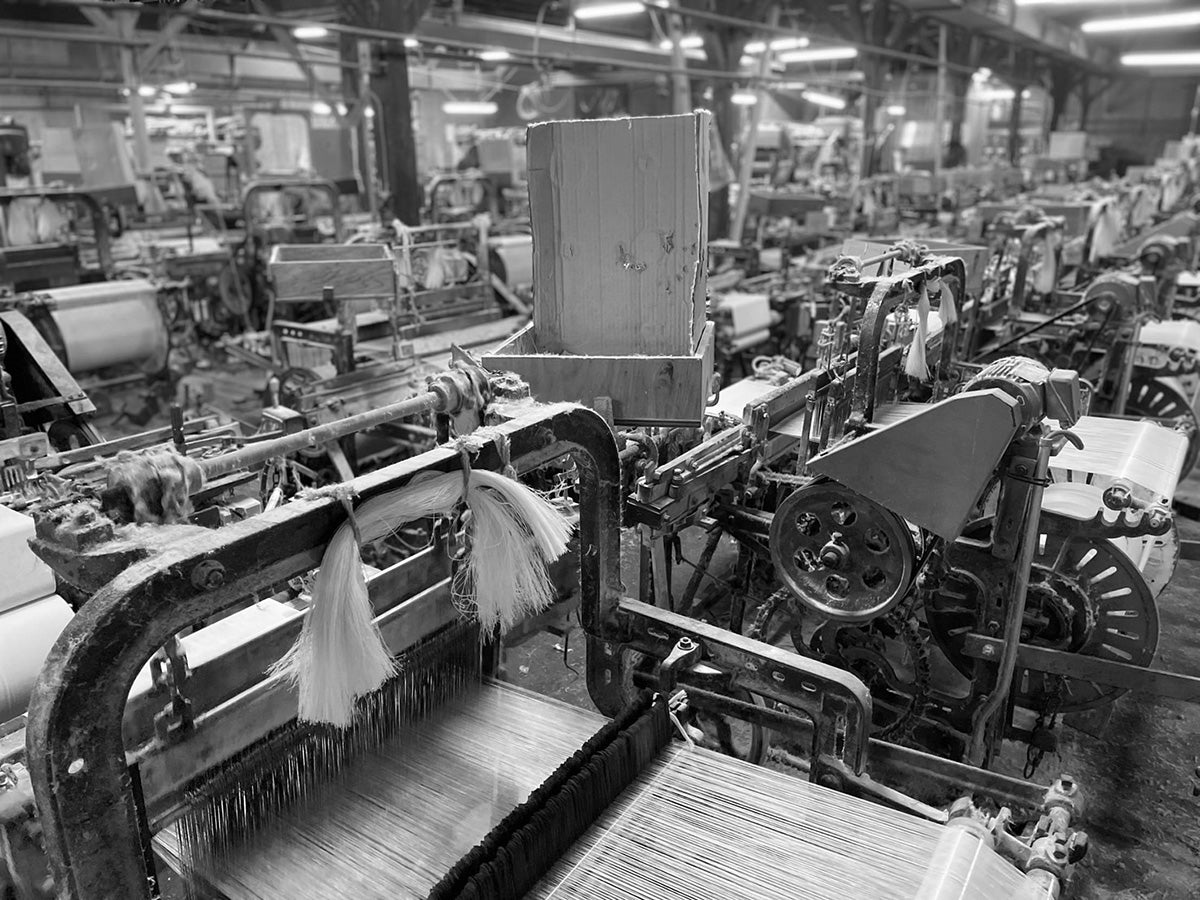
History and Origin
History and origins
ALBERTON was a large-scale spinning company that flourished in Maryland, USA, from the late 19th century to the early 20th century. As a central player in the US cotton market, it supplied duck fabric to the government and military, and during World War I it was widely adopted as "US ARMY DUCK."
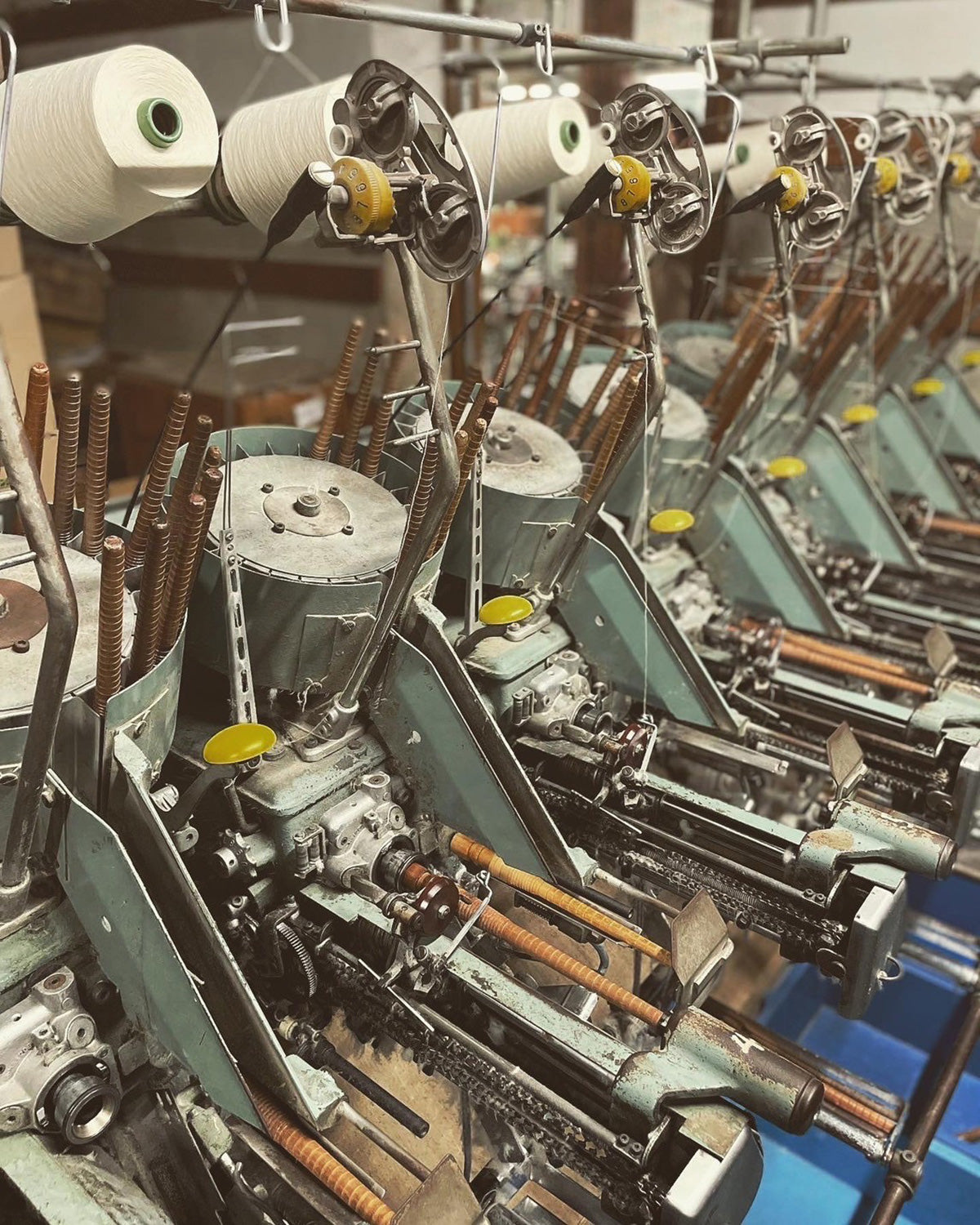
Decline and inheritance of value
Decline and inheritance of value
Due to the Great Depression, the name of the town disappeared along with the company name in 1938, but the duck fabric business itself continued and expanded, and its quality and existence continue to hold value today as proof that it has supported the unknown behind-the-scenes development of the industry.
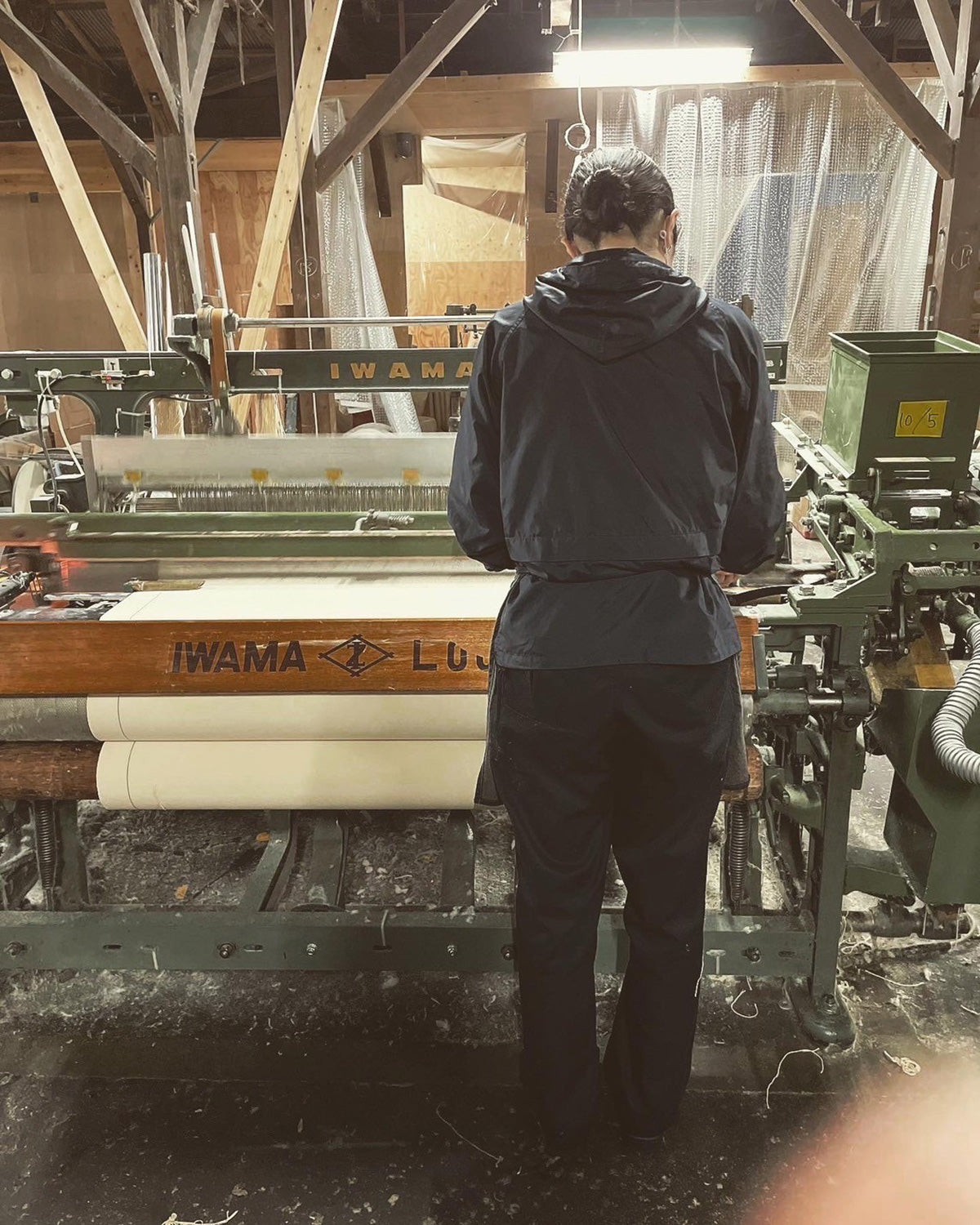
Revival in Japan and the present
Revival in Japan and the present
In 2016, the brand "ALBERTON®" was revived by a Japanese fabric producer, who produced duck fabric with selvedge stripes using old-fashioned power looms and the same manufacturing methods as those used at the time, breathing new value into the techniques and spirit of the past by bringing it back to life in the modern era.


